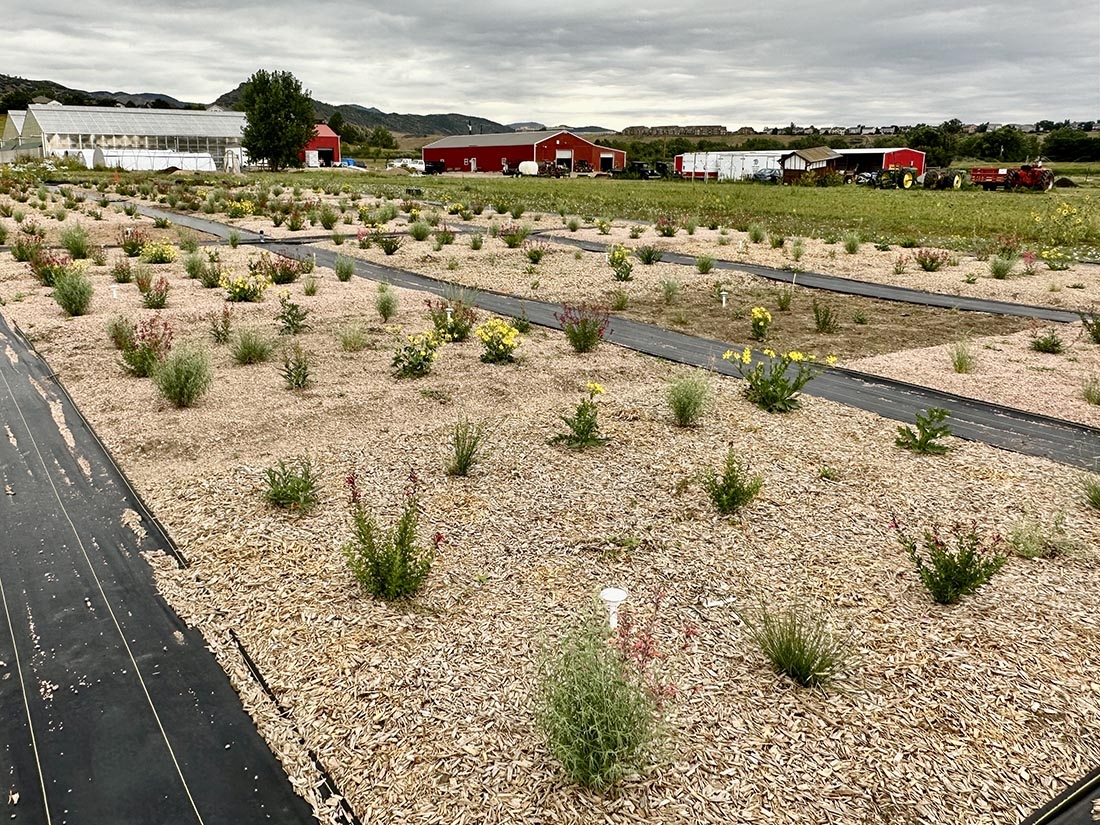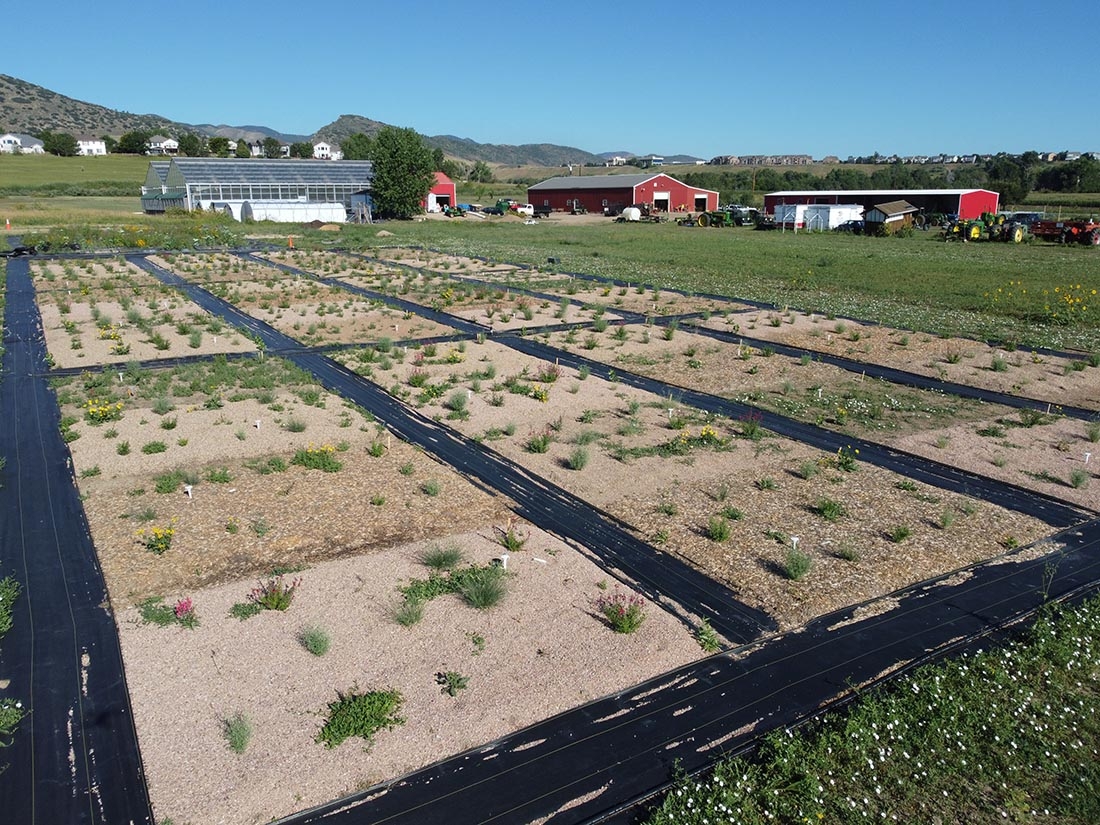Investigating Soil Amendment and Mulching Best Practices
Gardening is a complex endeavor. A symbiosis with countless living things, both seen and unseen, and the management of numerous interactions with the nonliving world. As such, it can be challenging to troubleshoot the underlying causes of poor garden performance or unexpected behavior of plants in the garden. Sometimes, it's best to go back to basics. And soils are often, quite literally, at the root of it all.
This year, the horticulture research team implemented a large field experiment at Chatfield Farms to determine the most effective combinations of soil amendments and mulches to improve soil characteristics, reduce water loss, limit weed growth and promote healthy ornamental plant growth. In early spring, we prepared over 16,000 square feet of land at Chatfield Farms. We removed existing vegetation, incorporated amendments into the soil, and applied mulches to the soil surface. Our team monitored plant growth, phenology and weed invasion throughout the season and sampled soils for physical and chemical analysis. Instruments were also installed in each plot to continuously measure the soil temperature and moisture content throughout the study.
Despite a dizzying amount of information in magazines and on the web, there is relatively little empirical research on this subject, especially for semi-arid regions like the Front Range of Colorado. The results from this work will help to inform our Sustainable Landscape Services program and our general horticultural practices at the Gardens.
An exciting feature of our study is that only native and regionally adapted plants with low water requirements are included. Generally, this group of plants does not require high soil fertility or lots of organic matter. Instead, excellent drainage and open pore space are thought to be more important, which goes against common horticultural wisdom urging gardeners to apply composts and organic mulches to improve soil fertility and texture. We hope the results illuminate best practices for this understudied group of landscape plants.
Mulching and soil amendment practices have also been shown to significantly influence how water from precipitation and irrigation infiltrates the soil and how much of that water is lost through evaporation. Through this study, we can compare how unique combinations of amendments and mulches differ in their ability to capture and retain precious water, recommendations that will further our goal of water conservation horticultural practices.
If you are interested in hearing about the preliminary results from this work or taking a deeper dive into soil science, members of our horticulture research team will present at the Landscaping with Colorado Native Plants Conference this February.
Gallery





Add new comment